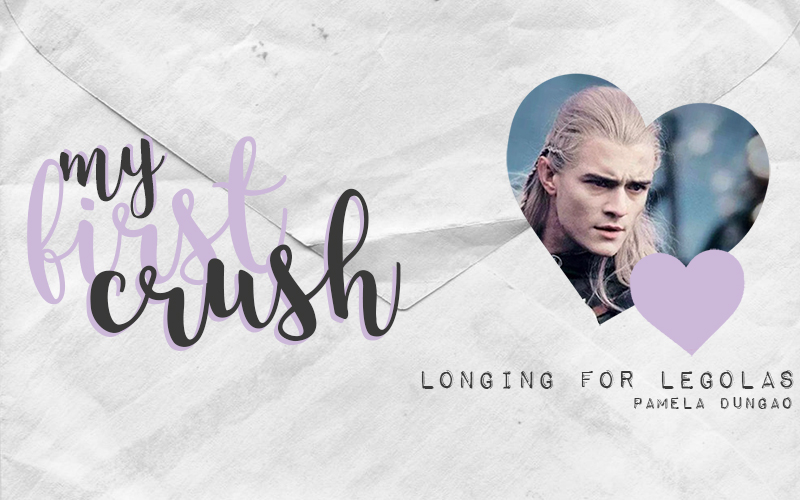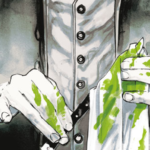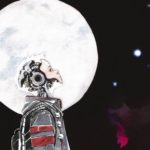
We first met when I was seven years old. I don’t remember if it was summer or winter, but I remember there was sun, warmth; a slight glint to his hair against the light. I remember he came in full stead, riding at the back of a horse like he’d just come out of a storybook.
My first crush was unreal, in more ways than one. He was beautiful, in the sort of entrancing, textbook way (pale golden hair, cheekbones, baby blue eyes). He was the quiet type, not the brooding kind. I remember the way he looked as if he was always deep in thought, attentive, like he thinks first before speaking and every move is calculated and careful.
We didn’t speak a word to each other, but I remember dreaming of the conversations we would have; our longings for more, our unspoken but shared desires, the lingering touches that lasted a second too long, and then the moment where we’d confess our undying love for each other. In our story – the one I imagined in my head over and over again, relayed in multiple adjacent versions of each other – there is always a doomed ending. We get separated. Someone is wounded. The other dies. There’s guilt. It’s painful. It’s sad. It’s tragic. None of it happened though, and none of it was real.
Aren’t all crushes, in some way, not real? Or, perhaps, in other words, unreal in the way that they somehow form into a narrative, like constructed versions of both reality and expectations and informed by the prospect of what ifs and could be’s. We covet them because they coaxed something from us. A vacant pursuit. They hold our imaginations and become vessels for our own desires. Crushes are never about the other person; they are almost always often only about our own selves. It seems only natural now to admit that my first crush was someone fictional.
At seven years old, I fell in love with the fantasy genre; first, through film and second, through books. By this point, I had already been well-acquainted with the way fiction carries us beyond our own realities. It was 2001 and the first of the Harry Potter films came out in theatres, as did Lord of the Rings: The Fellowship of the Ring. This was the same year when I first met him.

In the muted colours and greyness of Middle Earth, Legolas stood out to me as the brightest and fairest of them all. He didn’t hold the same brashness and ragged edginess of the two human men, Aragorn and Boromir. They were too troubled, anyway: Aragorn was running away from his own birthright, while Boromir just tried to take the Ring from Frodo. There was Gimli too, of course, who has been loveable but gruff. All beard. Too stout. They were all too masculine.
But Legolas was perfect. He was all soft and lithe. I used to imagine just how gentle he’d be. Unlike Aragorn and Boromir, who, in the films, already had set background stories, Legolas’ past had not been established. There was more than enough room for me to fill.
In these stories, I am me, only a better version of it. In these stories, I am not shy or quiet. I am not the girl at the corner of classroom hiding my doodles under a curtain of hair, keeping everyone out. Instead, I am Aragorn’s long-lost sister. I am a princess and a warrior. I am opinionated and confident. I act independently, sometimes recklessly, but I’m afraid of abandonment and separation, of being alone and unwanted. I ride horses and climb walls. I speak Elvish. My weapons of choice are two swords, a dual wield. At one point, Legolas teaches me how to use the bow and arrow. My heart races. And after successfully arguing with Aragorn and Elrond, I am the only girl who adventures with the rest of the Fellowship.
In these stories, I also have dark hair, grey eyes. I have pale skin. I’m white. This reads like the beginning of My Immortal, but I was seven years old and in all the stories of magic, dragons, and otherworldly and fantastic beings that I had encountered then, I only ever saw white characters. So I imagined that the only way for me to exist in Middle Earth was to be white; and the only way for Legolas, the brightest and the fairest of them all, to ever want me was to be white.

It is hard to reconcile these feelings now — these feelings of desire, of whiteness, of desire for whiteness. How my own validity of existence somehow depended on that desire and the need to be wanted by someone else. Seven years old might have been too young to be fully aware and conscious about the depth and implications of these feelings, but seven years old was also old enough, I think, to be aware of dreaming of having and being someone else, of longing and of going somewhere else. I had been unsatisfied with myself and where I was so I turned to Middle Earth, to the Fellowship, to Legolas.
These days, when I think of Lord of the Rings, I think of it with fondness. It is still the series I go to when I need a distraction, an escape. It is, after all, twelve hours of comfort, curled beneath a blanket. It is a valid twelve hours of an excuse to not see anyone and do anything and not feel guilty about it. Say I’ve done so much already, marathoned my way from the Shire to Mordor.
These days, when I think of Lord of the Rings, I do not think of Legolas. Not really. Not in the same way I used to. If crushes are never about the other person and only ever about our own selves, I think about the seven year old stories that I had collected and encountered through time. Perhaps, that is what matters the most: the story of us were never really stories of us, they were stories of me. Different and multiple and (problematically) better versions of me, but me, nonetheless.
Who was your first fictional crush? Do you want to write about them for Rogues Portal? Email pitches to Samantha! (Submissions are unpaid at this time.)



